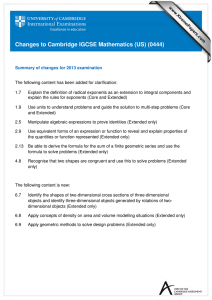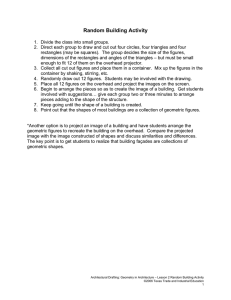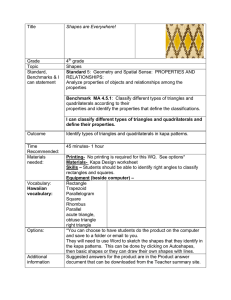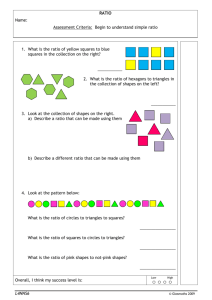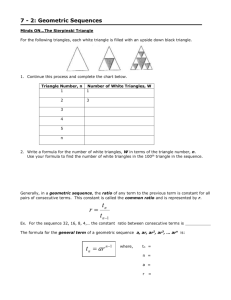Activity K.9B
advertisement
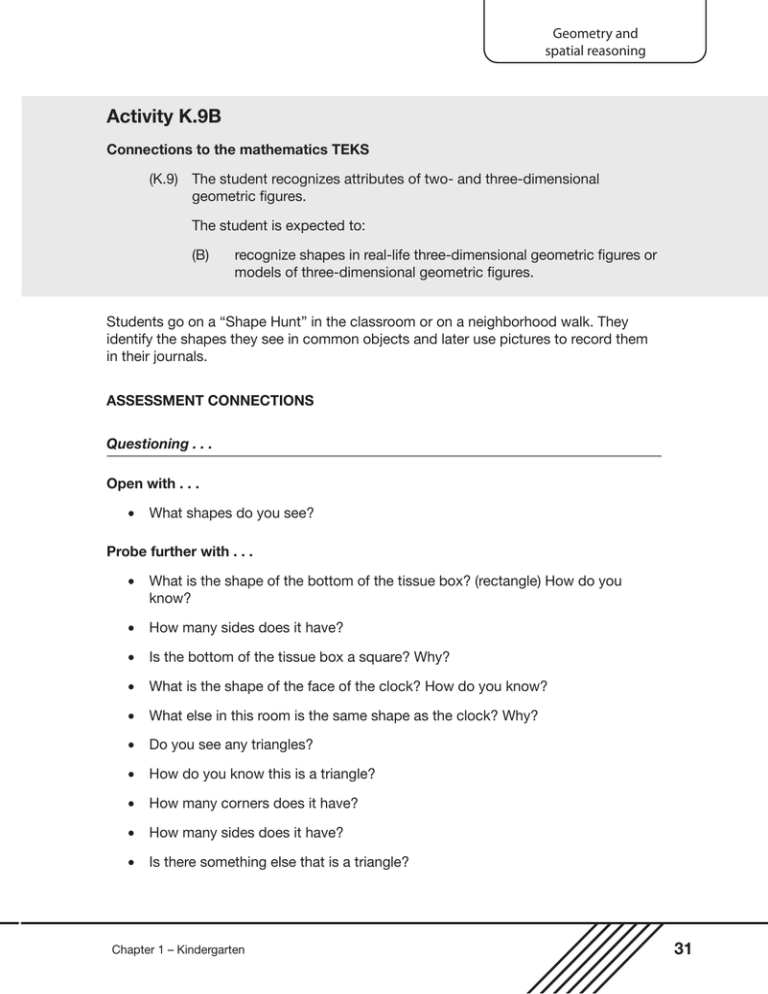
Geometry and spatial reasoning Activity K.9B Connections to the mathematics TEKS (K.9) The student recognizes attributes of two- and three-dimensional geometric figures. The student is expected to: (B) recognize shapes in real-life three-dimensional geometric figures or models of three-dimensional geometric figures. Students go on a “Shape Hunt” in the classroom or on a neighborhood walk. They identify the shapes they see in common objects and later use pictures to record them in their journals. Assessment Connections Questioning . . . Open with . . . • What shapes do you see? Probe further with . . . • What is the shape of the bottom of the tissue box? (rectangle) How do you know? • How many sides does it have? • Is the bottom of the tissue box a square? Why? • What is the shape of the face of the clock? How do you know? • What else in this room is the same shape as the clock? Why? • Do you see any triangles? • How do you know this is a triangle? • How many corners does it have? • How many sides does it have? • Is there something else that is a triangle? Chapter 1 – Kindergarten 31 Geometry and spatial reasoning • How are these triangles the same? (three sides, three corners) • How are these triangles different? (“This one is larger. This one has a really long side. This one has a skinny corner.”) Listen for . . . • Can the student recognize shapes in real-life objects? • Does the student use appropriate language when describing objects? • Can the student provide reasons for identifying the shape of the real-life objects? Look for . . . • Do the pictures in their journals reflect the shape attributes that the student described? • Does the student label the picture? 32 Chapter 1 – Kindergarten
